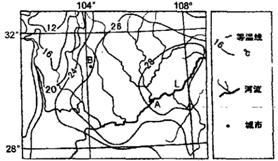Questions 11-15 are based on the following passage.
Edgar Snow was a reporter and a joumalist. He was a doer, a seeker of facts. His mature years were spent in communicating to people-he was an opener of minds, a bright pair of eyes on what went on about him. Fortunately, he went to many places, knew many people, saw many things; thus he communicated from depth and involvement. Suspicious of dogma, he stated in his autobiography. "What interested me was chiefly people, all kinds of people, and what they thought and said and how they lived-rather than officials, and what they said in their interviews and handouts about whatthey people’ thought and saiD." In writing about people and the event which shaped or misshaped their lives, his point of view was essentially honest and searching- founded on his own inquiry and resting on a body of truth perceived with vision and with compassion. His valued friend and editor, Mary Heathcote, stated that to Edgar Snow, "true professionalism meant telling the truth as one saw it, with as many of the reasons for its existence as one could find out and as much empathy as possible for the people experiencing it..."
That he is remembered mostly through Red Star Over China is understandable. The accounts in that book were of international importance and the experience for the author in getting those accounts was perhaps the most significant one in his life. Though it is typical of him what, after the acclaim the book received, he commented, "I simply wrote down that I was told by the extraordinary young men and women with whom it was my privilege to live at age thirty, and from whom I learned a great deal. " That "great deal" spread from the pages of Red Star to alter the thinking of countless people—including many citizens of China who were led by it to action that drastically affected their own lives and the course of their country’s future. An awesome realization of personal responsibility also came about at this point for the young journalist, one he was cognizant of the rest of his life—the discovery, as he heard of friends and students killed in a war they had been moved to join largely because of his reports, that his writing had taken on the nature of political action and that he, as a writer, had to be personally answerable for all he wrote.
There were other texts which broke through ignorance and prejudice in similar ways: Far Eastern Front, Living China, Battle for Asia, People on Our Side, Journey To the Beginning, to name some of the eleven books he produced, as well as many pages of engaged reporting—of floods and famines, of wars declared and undeclared, of human dilemmas and indignities, of unsung heroes and unheralded sacrifices-a life’s study of the impact of people and events from many lands known at first hanD.
Ed represents what is best in American joumalism—as did his compatriot Agnes Smedley and Jack Belden. They dedicated to action, to communication that would help lessen the need, help correct the injustices. A main objective of theirs, because they were there and they saw, because they were internationalists with concern for human welfare, values and dignity, was to contribute to an understanding of China and the crippling burdens she bore—in a world dominated by arrogance, greed, and ignorance. |

